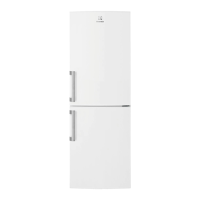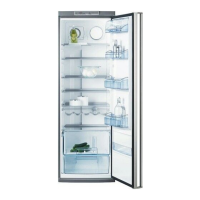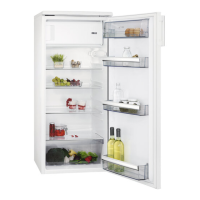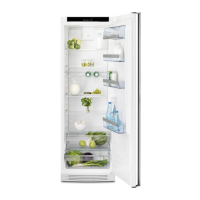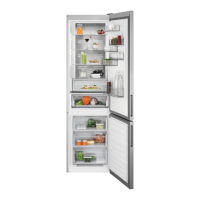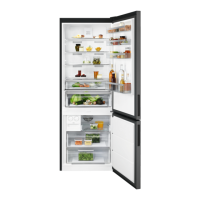32
To Use Dry Nitrogen To Flush The System:
1. Remove compressor and filter-drier. Connect
process coupling to outlet tube of condenser.
2. Fasten cloth over other end of coil to prevent old oil
from spraying over room.
3. Connect hand shut-off valve on flushing hose to
process coupling.
4. Slowly open hand shut-off valve and allow nitrogen
to flow through condenser until discharge is clear.
CAUTION: DO NOT exceed 300 PSIG.
5. Disconnect cap tube from evaporator. Flush
evaporator in same manner as condenser.
CAUTION: DO NOT exceed 150 PSIG.
6. Flush cap tube. This is only possible if you have
proper service valve adaptor.
CAUTION: DO NOT exceed 300 PSIG.
7. Reassemble system.
To Use Refrigerant To Flush The System:
CAUTION: Refrigerant used for flushing must
be recovered into a recovery system. Meter
amount of refrigerant used for flushing with
your charging cylinder. DO NOT OVERFILL
THE SYSTEM.
1. Disconnect the suction and discharge lines from the
compressor and remove the filter-drier. Connect
process coupling to outlet and inlet tube of condenser.
2. Connect hose to outlet process coupling and
charging cylinder. Connect another hose to inlet
coupling and recovery system.
3. Open charging cylinder and allow refrigerant to flow
through condenser until discharge into bag is clear.
NOTE: To flush evaporator and heat exchanger
you must remove evaporator from inside product to
disconnect cap tube.
4. Disconnect capillary tube from evaporator.
Flush evaporator in same manner as condenser.
5. Flush cap tube. This is only possible if you have
proper service valve adaptor.
6. Reassemble system.
Installing a New Compressor
NOTE: Entirely new compressors have been
developed for use with R-134a and Ester oil
refrigeration systems. Both compressor and electric
motor have been modified. Old compressors
intended for R-12 refrigerant must not be used for
new systems charged with R-134a.
Replacement of a compressor and installation of filter-drier
must be done in continuous sequence so system is
exposed to atmosphere no longer than necessary.
All replacement compressors are shipped with rubber plugs in
the suction, discharge and process tubes and contain the
correct oil charge and a holding charge of inert gas. Compres-
sors have a low-side process tube attached to the compressor
shell. A high-side process tube is attached to the filter-drier.
WARNING: DO NOT OPERATE RECIPROCATING
COMPRESSOR WHEN CHARGING LIQUID
REFRIGERANT INTO SYSTEM THROUGH ITS
PROCESS TUBE.
Replacement compressors for refrigerator may have an oil
cooler even if the original compressor did not. If the product is
not equipped for an oil cooler, leave the plastic caps in place
and install the compressor connecting only to the suction and
discharge lines of the new compressor.
Before installing the replacement compressor, remove the
discharge plug and check for the pop sound of the inert gas
leaving the compressor.
CAUTION: DO NOT use compressor if you do
not hear this sound.
If the compressor checks OK, reinstall the plug. Do not remove
any of the plugs again until the compressor is in position and
you are ready to braze the lines.
CAUTION: On R-134a systems, compressor must
NOT be left open to atmosphere for more than 10
minutes to prevent moisture contamination of
oil.
A new compressor which is cold (e.g. after having been kept
in a cold service van) should be left to warm to the surrounding
temperature before the plugs on the compressor connections
are removed. This will help prevent condensation from forming
in the oil and the compressor. Also, avoid opening the system
when any of the components or lines are cold.
NOTE: Release holding charge (release slowly to avoid
oil discharge) on new compressor to ensure there is no
leak in seam or tubing. Reinstall rubber plug.
1. Disconnect electrical supply to refrigerator.
2. Remove compressor access panel.
3. Recover refrigerant by using EPA approved
recovery system.
4. Remove condenser fan mounting screws.
5. Unplug fan motor harness located in back of fan motor.
6. Remove fan motor and fan blade.
7. Remove leads from compressor motor terminals.
8. Remove mounting clips and washers.

